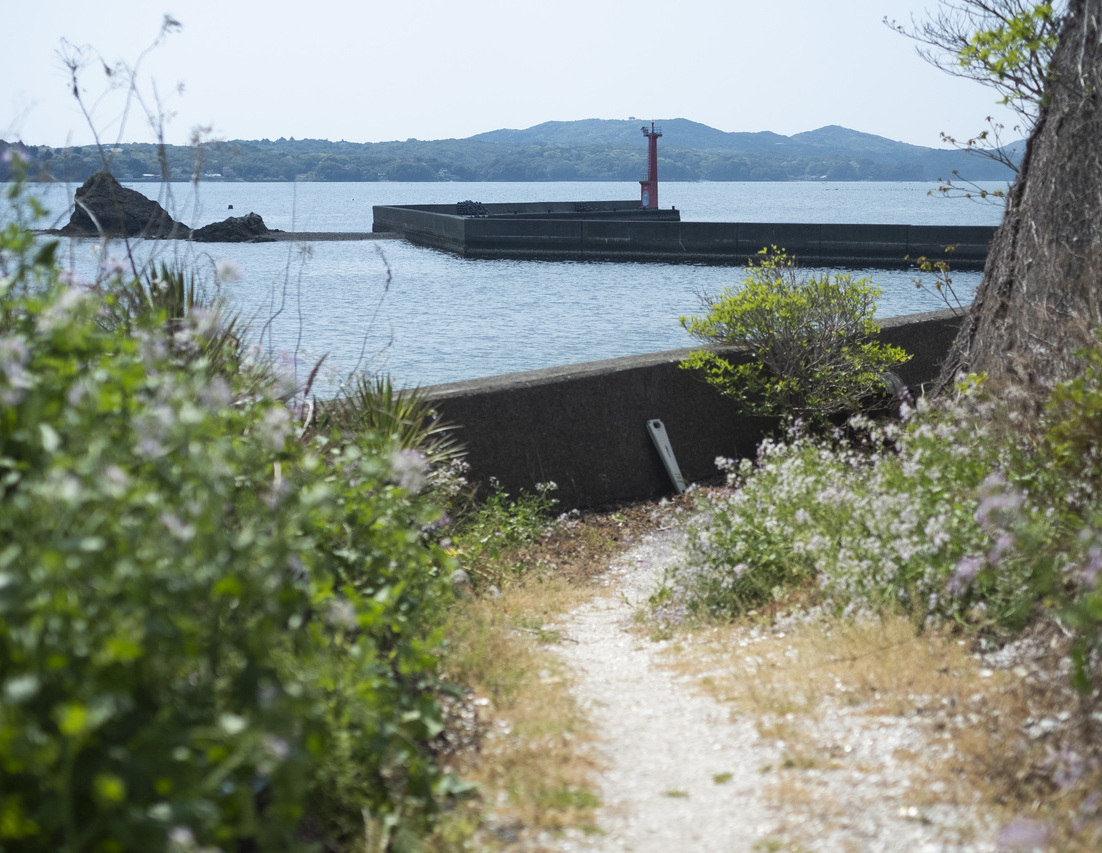Prayer of the Pearl
Prayer of the Pearl- Visiting Tamaki Sato, a pearl farmer, and Kouta Yamamoto of Yashima Pearl
Yashima Pearl Farm was established in 1949 on Masaki Island, one of the islands floating in Ago Bay on the rias coast that nurtures the Ise-Shima abundant with life, and established its retail division in Ise City in 1971. ARTIDA OUD has been collaborating with Kouta Yamamoto, the fifth owner of Yashima Pearl, and his uncle, Tamaki Sato, who continues the pearl farming business on the island, since "philia" series.
Mr. Yamamoto and Mr. Sato have fully cooperated with us in the production of the limited-edition charms that we created with Shae Honda. This time, we visited them together with Ms. Honda.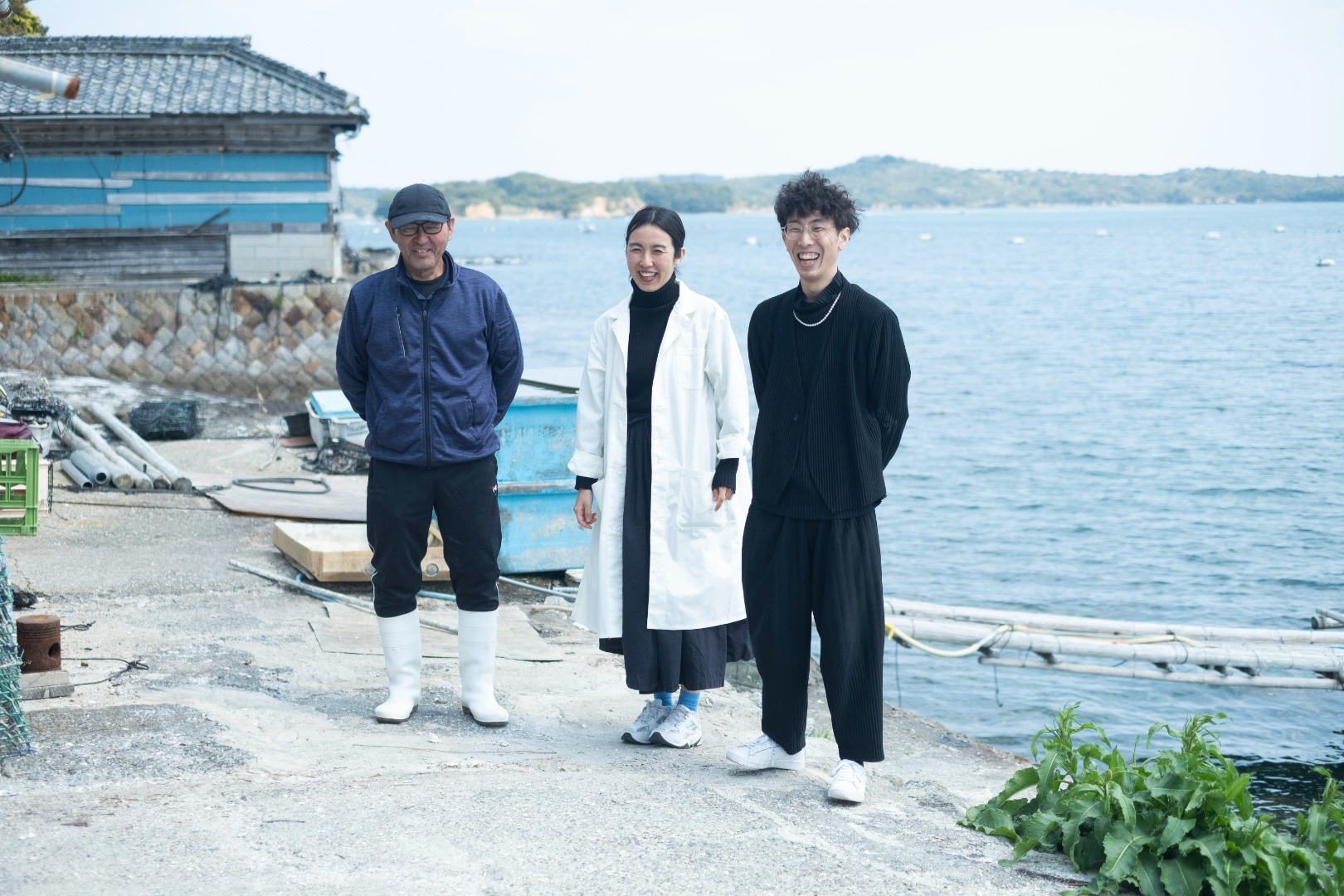 From left to right: Tamaki Sato, Shae Honda, and Kouta Yamamoto.
From left to right: Tamaki Sato, Shae Honda, and Kouta Yamamoto.
Akoya pearls that take a period of four years to develop
Mr. Sato is super experienced in Akoya pearl cultivation which he has been engaged in for more than 40 years on Masaki Island. Even with his proven techniques, pearl cultivation is not an easy task. Akoya pearls are cultivated in the "sea", where unforeseen natural phenomena occur continuously, such as ocean currents, sea water temperature and typhoons. It is said that only about 20% of Akoya pearls are produced with a perfect round shape.
First, the juvenile Akoya oysters are slowly cultivated in the nacre over a period of two years.
In the meantime, we repeatedly prune the underdeveloped shellfish. After that, the shell nucleus is inserted into the mother oyster. The shell which is cut into a round shape and forms the core of the pearl, and a part of the oyster flesh which is the source of the pearl called mantle are placed together inside the Akoya pearl oyster. The Akoya oysters spends about a month from then in the calm sea. This is called "resting". 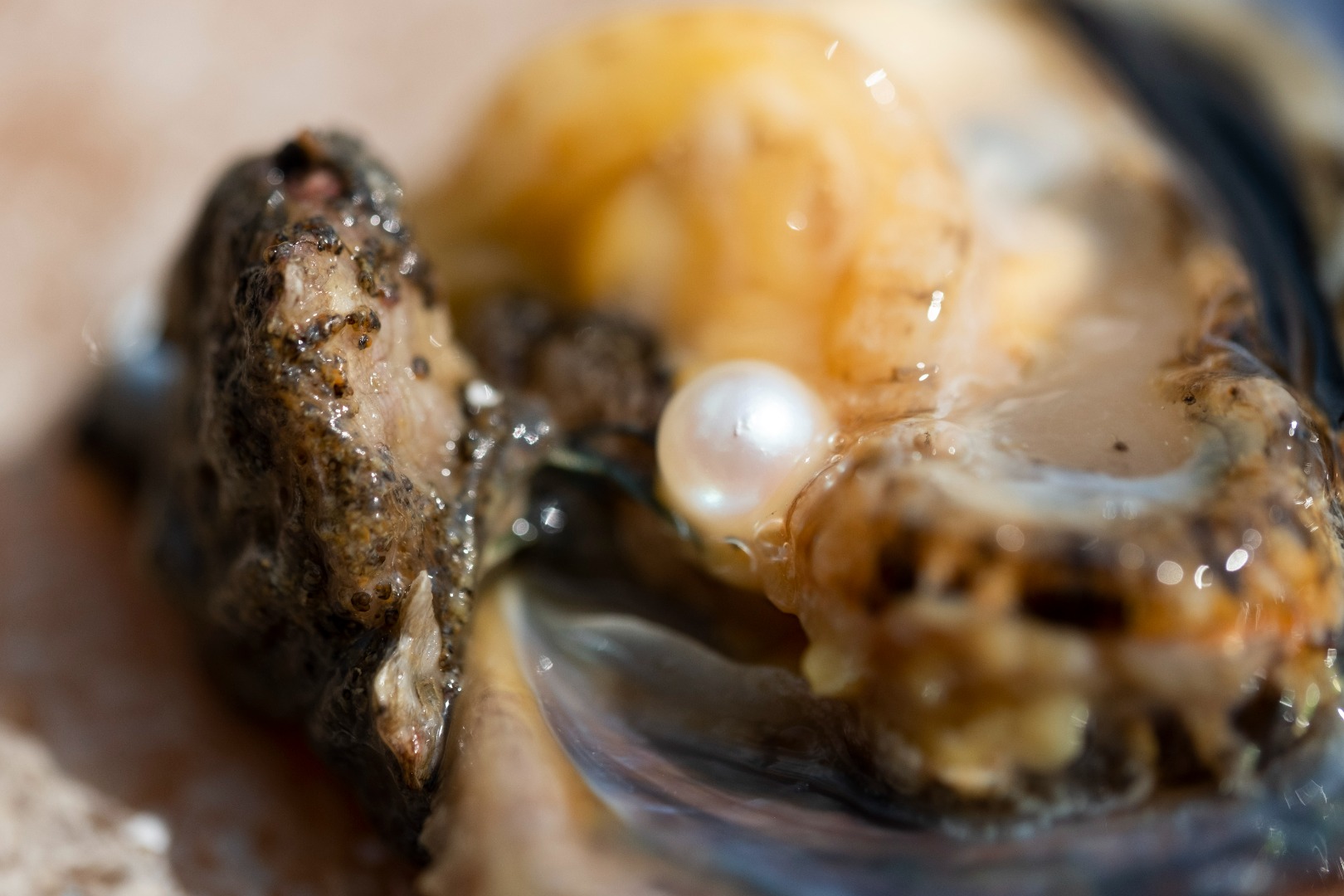 A pearl freshly extracted from an Akoya pearl oyster. It radiates a brilliance that evokes the power of life.
A pearl freshly extracted from an Akoya pearl oyster. It radiates a brilliance that evokes the power of life.
"Perhaps it is better to think of a nucleus insertion as a surgical operation for a human being. For example, imagine putting a baseball into your stomach. It is a major operation, and you may die from wound shock. To prevent such a situation from happening, the density of the basket is increased to reduce the effects of oxygen concentration and tides, and the physiological state is gradually lowered. This is so-called "anesthesia" state. This is why the basket filling is the most important part of the process. "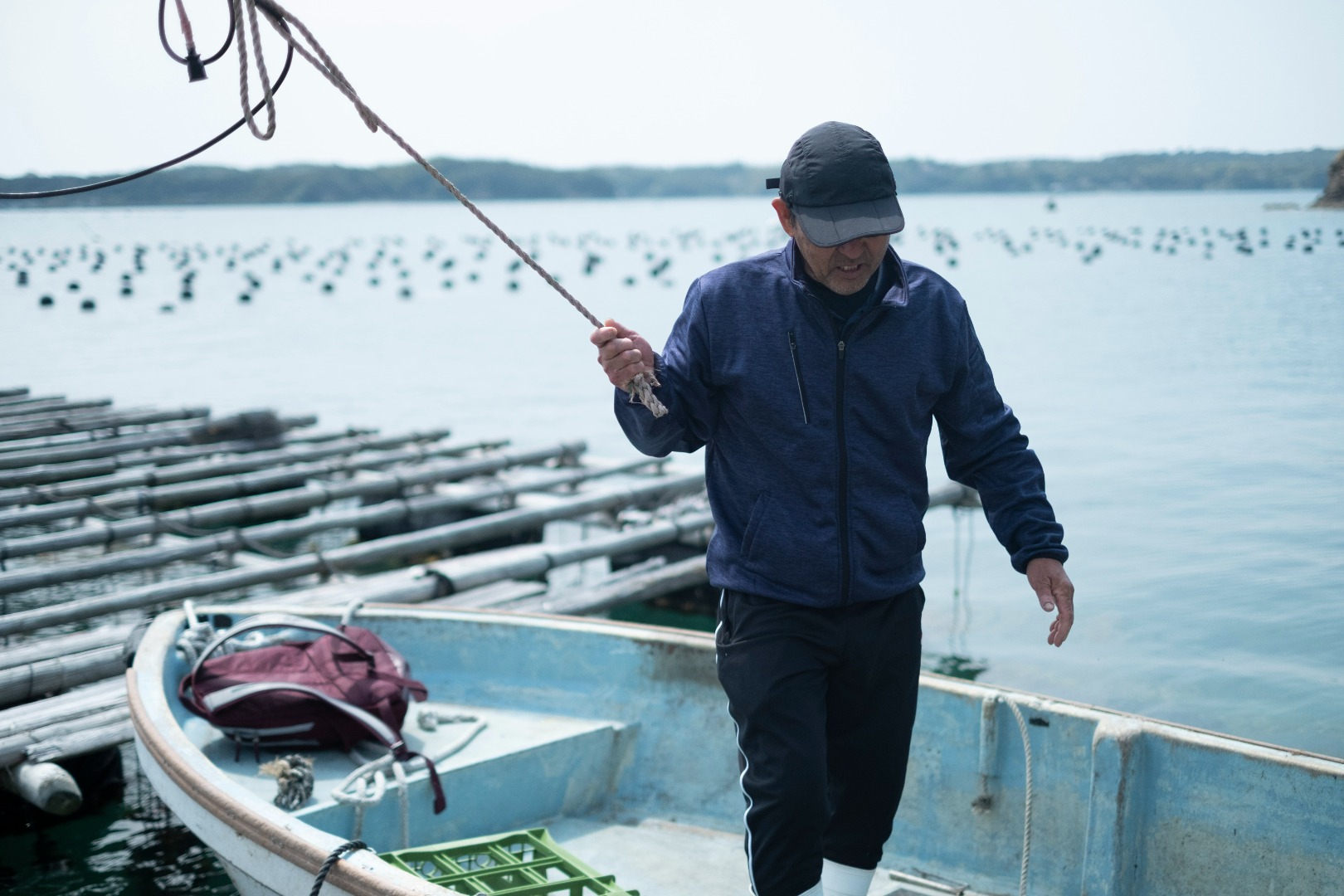 The Akoya oysters that Mr. Sato raises lie under the cultivation shelves on the left.
The Akoya oysters that Mr. Sato raises lie under the cultivation shelves on the left.
Embraced by the rich sea of Ago Bay, two more years have passed, and it was finally time for the harvest. The Akoya pearls with a diameter of 6mm used for this limited edition "behind sphere" charm are finally ready. As the shells are carefully opened by hand one by one, "the joy of finding a perfectly round pearl is always exceptional," said Sato.
Masaki Island, where Mr. Sato cultivates pearls, is known as "the island of pearl cultivation". At its peak in the 1950s, the population of island had grown to nearly 700 residents, many of whom were engaged in pearl cultivation. Today, however, the island has fewer than 70 residents, many of whom are elderly and there are only about 10 pearl farms.
I want to give something back to society through pearls.
"Despite the rising prices of pearls, which are becoming increasingly popular throughout the world, the number of people engaging in pearl farming is very small.", said Kouta Yamamoto, who is the nephew of Mr. Sato and the fifth owner of Yashima Pearl. After graduating from a university in Tokyo, Mr. Yamamoto worked in a department store, and as an assistant to a fashion journalist before starting work in his family's business, Yashima Pearl. He was not interested in pearls at all until he graduated from high school.
After graduating from a university in Tokyo, Mr. Yamamoto worked in a department store, and as an assistant to a fashion journalist before starting work in his family's business, Yashima Pearl. He was not interested in pearls at all until he graduated from high school.
"I was a normal high school boy, and I was not interested, or rather, I have no concerns about pearls. After I started working, I had the opportunity to be involved in a traditional craft project, since when I have developed a strong interest in pearls. Now I hope to give something back to society through this job."
Drilling holes in pearls is one of the "designs".
Mr. Yamamoto learned about pearl cultivation directly from his uncle, Mr. Sato, and he also engages in processing, design and sales with his own hands. This is unusual in the pearl industry, where the specialization is the norm. He has a desire to change the practices of the industry and make the whole industry sustainable.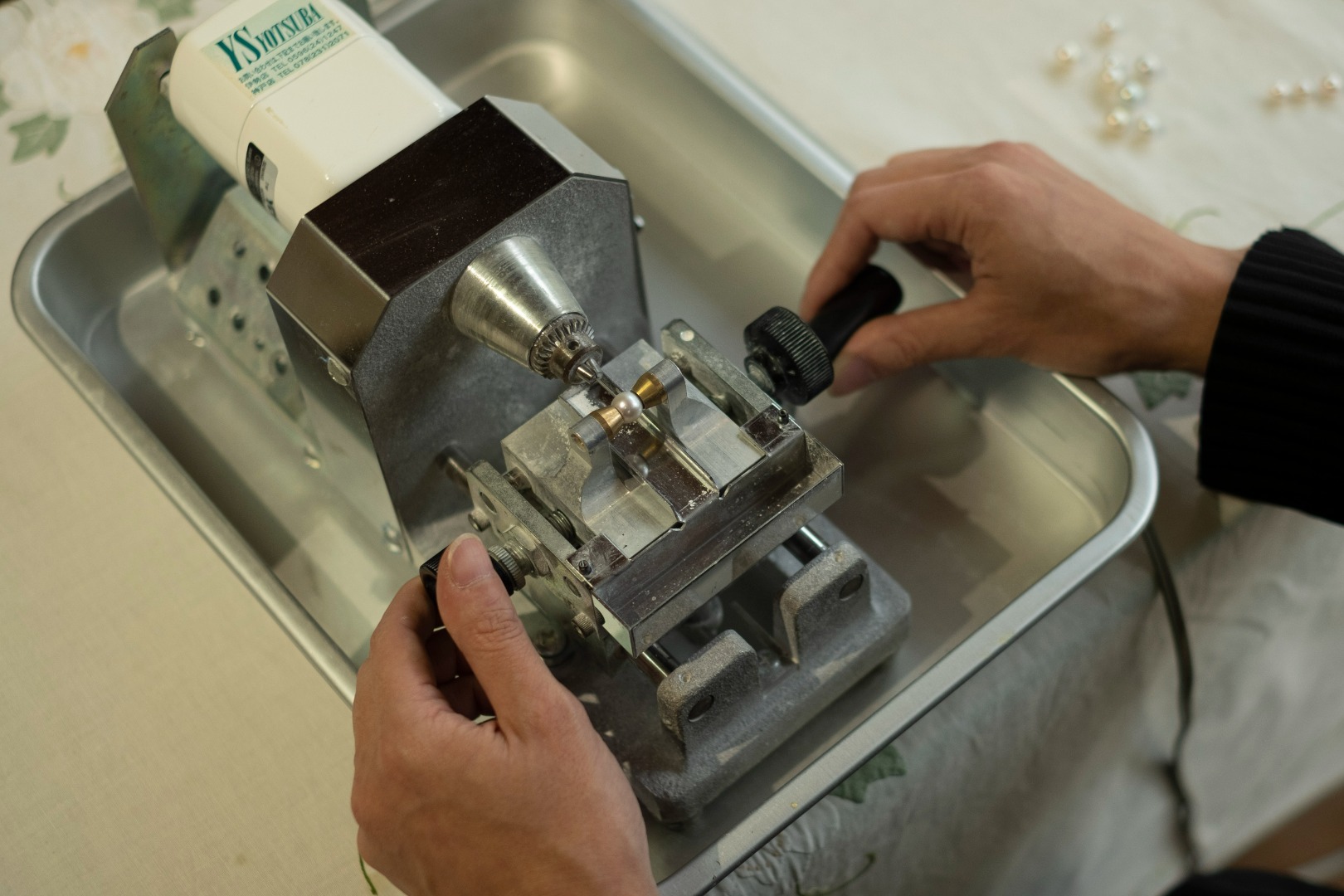 "For example, when drilling a hole to string the pearls together, if it is done by different division, the hole will be drilled mechanically in the center of the pearl, but actually the overall design will change depending on where the hole is drilled, especially the irregularly shaped pearls such as baroque pearls."
"For example, when drilling a hole to string the pearls together, if it is done by different division, the hole will be drilled mechanically in the center of the pearl, but actually the overall design will change depending on where the hole is drilled, especially the irregularly shaped pearls such as baroque pearls."
Mr. Yamamoto said that the drilling is also a part of the design. From cultivation to sales, he is trying to create a new value for pearls through communication within the family, which he has developed over the years.


